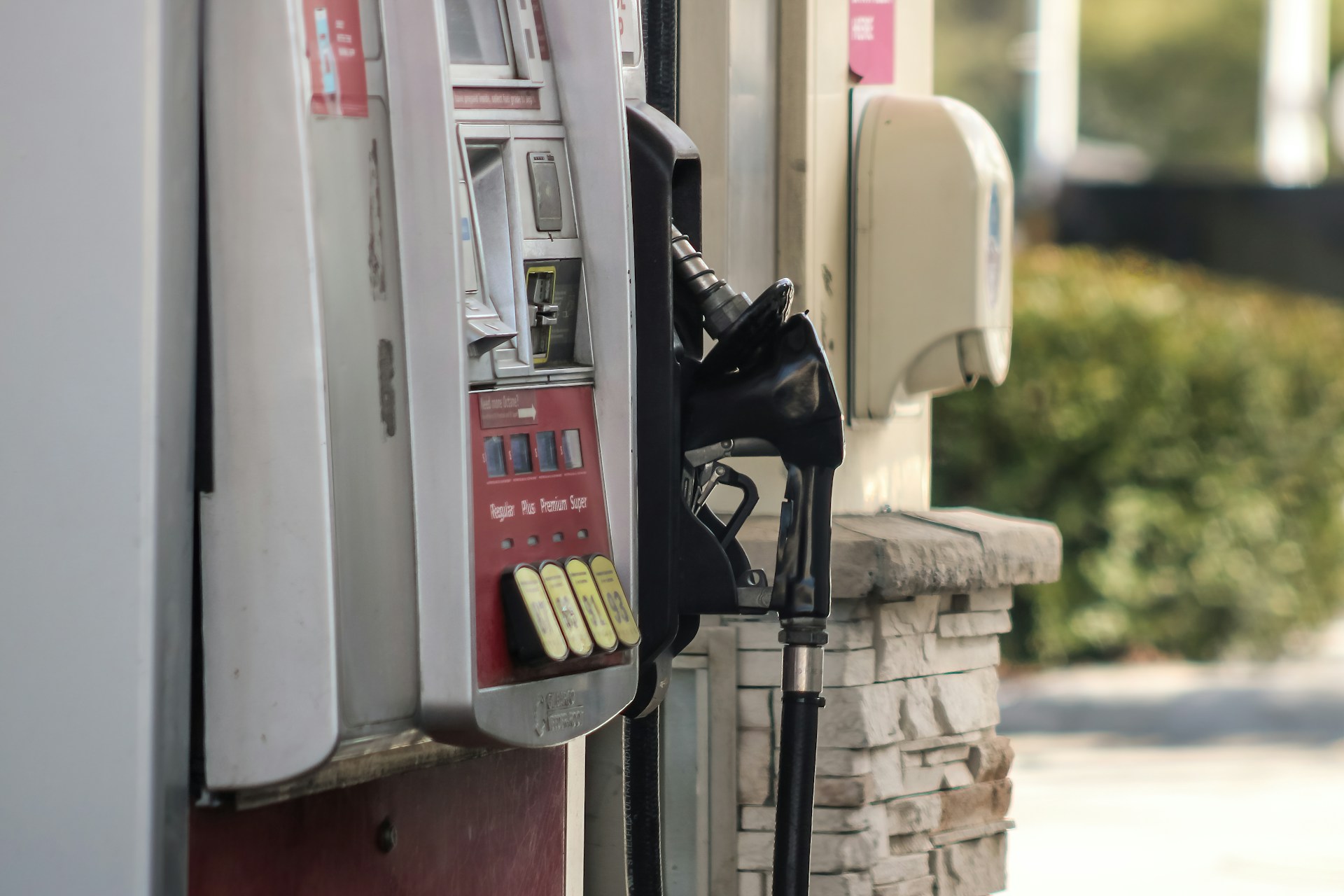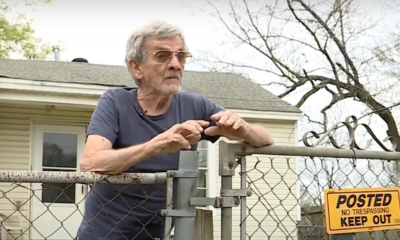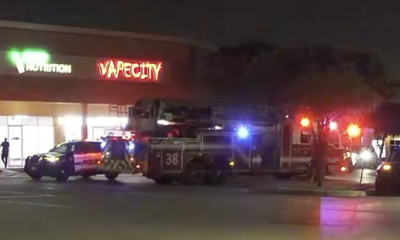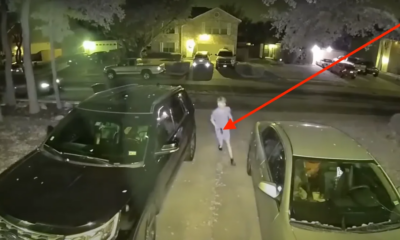Preparedness
Kansas Prank Prompted by Social Media Escalates to Tragic Shooting

An incident that turned a light-hearted Kansas high school prank into a tragic event has brought to light the dire consequences when games are taken to extremes. Last month, a group of teenagers engaged in a “senior assassin” prank involving gel bead guns turned perilous when a real firearm came into play, leaving one teen paralyzed from the waist down.
The event, initially reported by Fox News Digital, occurred in the vicinity of a Walmart in Goddard just before 5:00 p.m. on May 11. The Sedgwick Sheriff’s Office responded to the shooting that left 18-year-old Anakin Zehring severely injured with a gunshot wound to his back, hitting his kidney, liver, and spinal cord.
Anakin’s GoFundMe page stated,
“On May 11th, our lives changed forever when my son was involved in the tragic incident at the Goddard Walmart shooting. He sustained severe injuries, including a bullet wound that punctured his duodenum (upper part of the small intestine) and damaged his spinal cord, causing loss of sensation from the waist down. Despite undergoing four surgeries and intense medical care, his recovery journey is just beginning, and we need your help.”
The “senior assassin” game, a phenomenon stemming from social media, had high schoolers ‘assassinating’ each other using gel bead guns and water guns. It’s not uncommon for participants to share their experiences on various social platforms.
The calamity unfolded when Zehring and his friends shot their gel-bead guns at two teenagers outside the Goddard Walmart. Discrepancies arose regarding who fired the gel blaster, but it is undisputed that their actions led to the escalation of events.
Following the gel-bead gun incident, one of the targeted teenagers informed her father, Ruben Marcus Contreras, of the situation. Contreras, armed with a real firearm, located Zehring and his friends in a Chevrolet Spark in the Walmart parking lot. This is where the prank took a deadly turn, resulting in Contreras discharging his handgun into the vehicle, gravely wounding Zehring.
Contreras has since been charged with first-degree attempted murder for his actions.
As of this report, Zehring’s GoFundMe has garnered $12,074 towards their goal of $50,000. The fundraiser’s plea states, “Every donation, no matter how small, brings us one step closer to ensuring he gets the care and support he needs. We are eternally grateful for any assistance you can provide. If you cannot donate, your prayers and shares of this campaign are equally valuable in spreading the word.”
This tragic event serves as a stark reminder of the potential consequences when harmless pranks turn serious and underscores the importance of handling such situations with restraint and wisdom.
Let us know what you think, please share your thoughts in the comments below.

Preparedness
How Much Gasoline Should You Store for Emergencies?

In the event of an emergency, one of the first resources to disappear will likely be gasoline. The question is: how much emergency gasoline should you actually have on hand?
To answer this, start by evaluating your current gasoline usage. Americans consume a staggering amount of gas—over 374 million gallons annually, which equates to roughly 1.5 gallons per adult each day.
In scenarios where the power fails, gas pumps become inoperative, leading to long lines and widespread shortages. The key to avoiding such discomfort is to plan ahead by determining your gasoline needs and storing it safely for future use.
However, storing significant quantities of gasoline presents challenges. It’s wise to ensure that gasoline is only a part of your overall fuel strategy. Consider diversifying your fuel sources by incorporating propane, solar, and even wood-based options.
“Gas is highly flammable so make sure you store it safely.” Avoid storing gasoline inside your home, in direct sunlight, or near any heat sources. Use approved containers and adhere to safety guidelines to minimize fire risks. Also, be aware that local regulations may limit the amount of gasoline you can legally store.
When it comes to calculating your gasoline needs in a survival situation, some basic math can help. Assume a vehicle with a fuel economy of 15 miles per gallon and a 15-gallon tank capacity. This setup provides a range of 225 miles per full tank.
In a survival scenario, ensure your bug-out location is within a single tank’s range, as refueling might be challenging or impossible. For instance, if your destination is 200 miles away, you’ll need 30 gallons for a round trip of 400 miles, with some extra for contingencies. If you start with a full tank, you’d only need an additional 15 gallons stored.
Most people rely on inverter generators in emergency scenarios due to their mobility and quieter operation. While generator efficiency varies, they typically have a one-gallon capacity and can run between three to eight hours on that gallon. If you run your generator four to six hours daily, you might use 1.25 gallons per day, totaling 37.5 gallons for a month.
Combining these needs, your total gasoline requirement could reach 67.5 gallons. This figure may seem daunting, but it’s crucial to assess your specific fuel needs. If you don’t need to drive to a bug-out location or if the weather is mild, you can significantly reduce your fuel consumption.
Consider this information not as a rigid guideline but as a catalyst for reevaluating your gasoline needs and exploring alternative fuel sources.
Let us know what you think, please share your thoughts in the comments below.
Preparedness
Discover the Unexpected Joys of Being a Prepper

Reflecting on recent years, it’s clear that being a prepper has offered me a sense of gratitude and peace of mind that many may not experience. The world has faced its fair share of challenges, with disasters—both natural and man-made—making headlines frequently. The rush to stock up on essentials during lockdowns highlighted the importance of being prepared. People scrambled for items like hand sanitizer and toilet paper, leading to a surge in demand for preparedness companies.
This situation underscored a significant advantage of being a prepper: peace of mind. When chaos ensues, knowing that your family is secure and you don’t have to join the frantic crowds is invaluable. Being a prepper means embracing self-reliance in all aspects of life. There’s a unique empowerment in knowing that your family possesses basic survival skills, whether it’s changing a tire, finding water, or starting a fire.
Moreover, preppers have the opportunity to assist others. In a blackout, you might be the only one with a flashlight, or the person with the necessary multi-tool to fix something. Your first aid skills could save a life, and your situational awareness might help avoid danger.
Self-reliance also reduces anxiety and enhances problem-solving skills. While many are familiar with the ‘fight or flight’ response, there’s a third: “Fight, Flight, or Freeze.” Unfortunately, anxiety can cause some to freeze. However, practicing basic skills makes it less likely for preppers to freeze, or if they do, it’s only momentarily.
Living a prepared lifestyle means being less of a burden during crises. If more people were ready for even short durations, there would be fewer store shortages and fewer people needing rescue, allowing faster aid to those truly in need.
Additionally, prepping aligns with environmental consciousness. While I don’t consider myself an environmentalist, I do value a healthy ecosystem. I want clean rivers and lakes for fishing, uncontaminated well water, and a thriving wilderness.
Regardless of when you began your prepping journey, every skill learned and item stored contributes to better preparedness for the future. It’s a lifestyle choice that offers much to be thankful for.
Let us know what you think, please share your thoughts in the comments below.
Preparedness
Ignite the Impossible: Fire-Making Secrets for Rainy Adventures

Mastering the art of fire-making is essential for any outdoor enthusiast, but doing so in the rain requires an elevated skill set. Whether you’re an avid camper or hiker, knowing how to ignite a fire in wet conditions can be crucial. In dire situations, a fire can mean the difference between life and death, offering warmth and the ability to cook food.
The first step in starting a fire in the rain is to gather tinder. Pine needles are an excellent choice because they dry quickly. Alternatively, you can use tree bark, as it often has a dry side. It’s wise to carry your own firestarter for emergencies, but if you find yourself without one, these natural options can be lifesavers.
Next, seek out kindling and fuel wood. Search for dry wood in areas with natural cover, such as beneath a leaning rock, a fallen tree, or the lower branches of an evergreen. To ensure the wood is dry enough, test the kindling by snapping it; it should break easily. For larger branches, split them with a knife to access the dry wood inside.
Once your materials are collected, choose a location for your fire. Underneath a large tree is a good option, or you can create a makeshift shelter by stringing a tarp between trees. This will help shield your fire from the rain.
Creating a bed for your fire is essential to keep it off the wet ground. You can use tree bark or construct a bed from branches. This separation is crucial to prevent moisture from extinguishing your fire.
In wet weather, avoid digging a fire pit, as it can fill with water. Instead, build your fire on a slight mound of earth. This elevation prevents water from pooling and dousing your flames.
“Note that cutting bark from a tree should in fact only be done in an actual emergency, as this can damage and even kill the tree.” This is a vital consideration for anyone practicing survival skills in the wild.
By following these steps, you’ll be better prepared to start a fire in challenging conditions. Remember, preparedness isn’t just a hobby; it’s a way of life.
Let us know what you think, please share your thoughts in the comments below.
-

 Tactical1 year ago
Tactical1 year ago70-Year-Old Fends Off Intruder with Lead-Powered Message
-

 Tactical1 year ago
Tactical1 year agoVape Shop Employee Confronts Armed Crooks, Sends Them Running
-

 Preparedness11 months ago
Preparedness11 months agoEx-Ballerina’s Guilty Verdict Sends Tremors Through Gun-Owner Community
-

 Preparedness9 months ago
Preparedness9 months agoGood Samaritan Saves Trooper in Harrowing Interstate Confrontation
-

 Tactical1 year ago
Tactical1 year agoMidnight SUV Theft Interrupted by Armed Homeowner’s Retaliation
-

 Survival Stories2 years ago
Survival Stories2 years agoEmily’s 30-Day Experience of Being Stranded on a Desert Island
-

 Preparedness10 months ago
Preparedness10 months agoArizona Engineer’s Headless Body Found in Desert: Friend Charged
-

 Preparedness10 months ago
Preparedness10 months agoBoy Saves Dad from Bear Attack with One Perfect Shot
Robert Jenkins
June 22, 2024 at 12:06 pm
Number one If number one had not happpen the other things would not sobeen in play . But all so the other would not had happen with some common sence.
Daniel Quigley
June 22, 2024 at 12:31 pm
It’s sad that some idiot so called adult feels it’s OK to bring a real gun to a water gun fight. I pray that idiot using his real gun never again walks this Earth as a free man spending the rest of his life in prison. My prayers go out to the young man he tried to kill as well as his friends who witnessed this deadly assault.
Timothy
June 22, 2024 at 1:40 pm
the over reach of laws written by gov’t. (idiots) in Amerika, really believe they can stop natural selection. Only GOD chooses who lives and who dies. He is the giver of life. Silly man can only take life and destroy it.
Gotcha
June 22, 2024 at 2:01 pm
There is not enough information in this article to make an informed opinion as to who is “more at fault”. After reading the immature comment, it could easily be said that the “idiot” was the person who has been watching movies like Gotcha and thought it would be a good idea to chase people around a crowded public space with realistic looking airsoft guns. Until more detailed information is provided there is no way to make an educated opinion of the “adult’s” actions.
T Lau
June 22, 2024 at 2:38 pm
Your brain doesn’t work fast enough to determine if a gun is real or not. Anyone that plays with guns should understand that there are consequences if not played in a private gaming area. I feel bad that this happened to the boy, BUT those games should not be allowed in the open world. The Dad was wrong in shooting at a fleeing car, so they both bear responsibility.
judy
June 22, 2024 at 3:48 pm
BOYS WILL BE BOYS. Men will be men, And a father’s reaction to a daughter lacking correct information is deadly.
Jim
June 22, 2024 at 5:03 pm
For every stupid action there is likely to be at least one stupid reaction, if not more. If you are the person starting something (the perp) you have given the option of the
reaction to the person you targeted. Yes, in this case, the reaction may be on the harsh side, but that’s how some people are.
Jeff
June 23, 2024 at 4:24 am
Agree 100O% with Daniel.